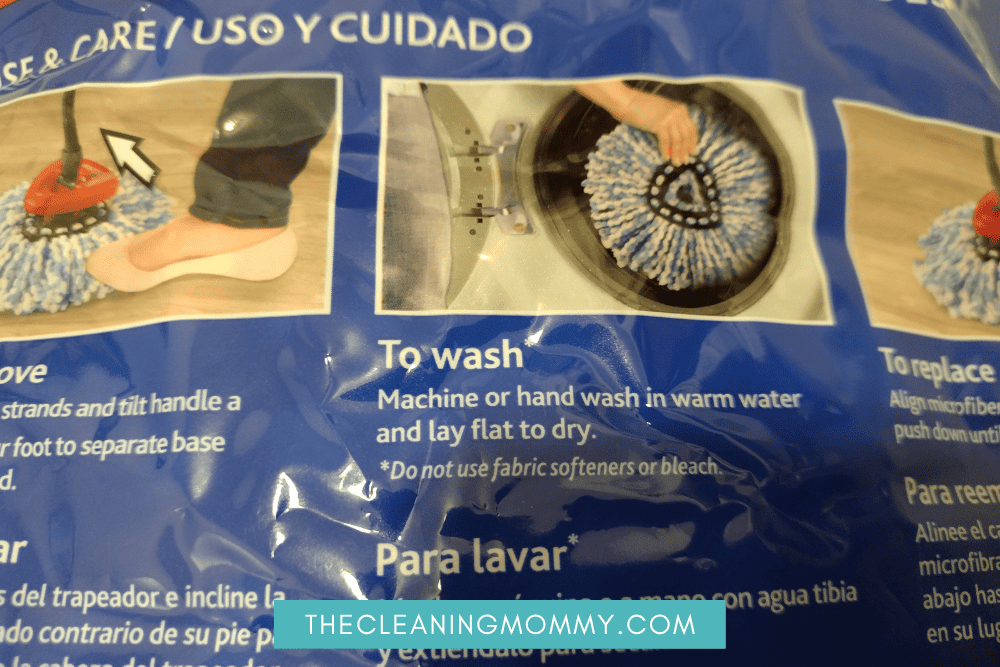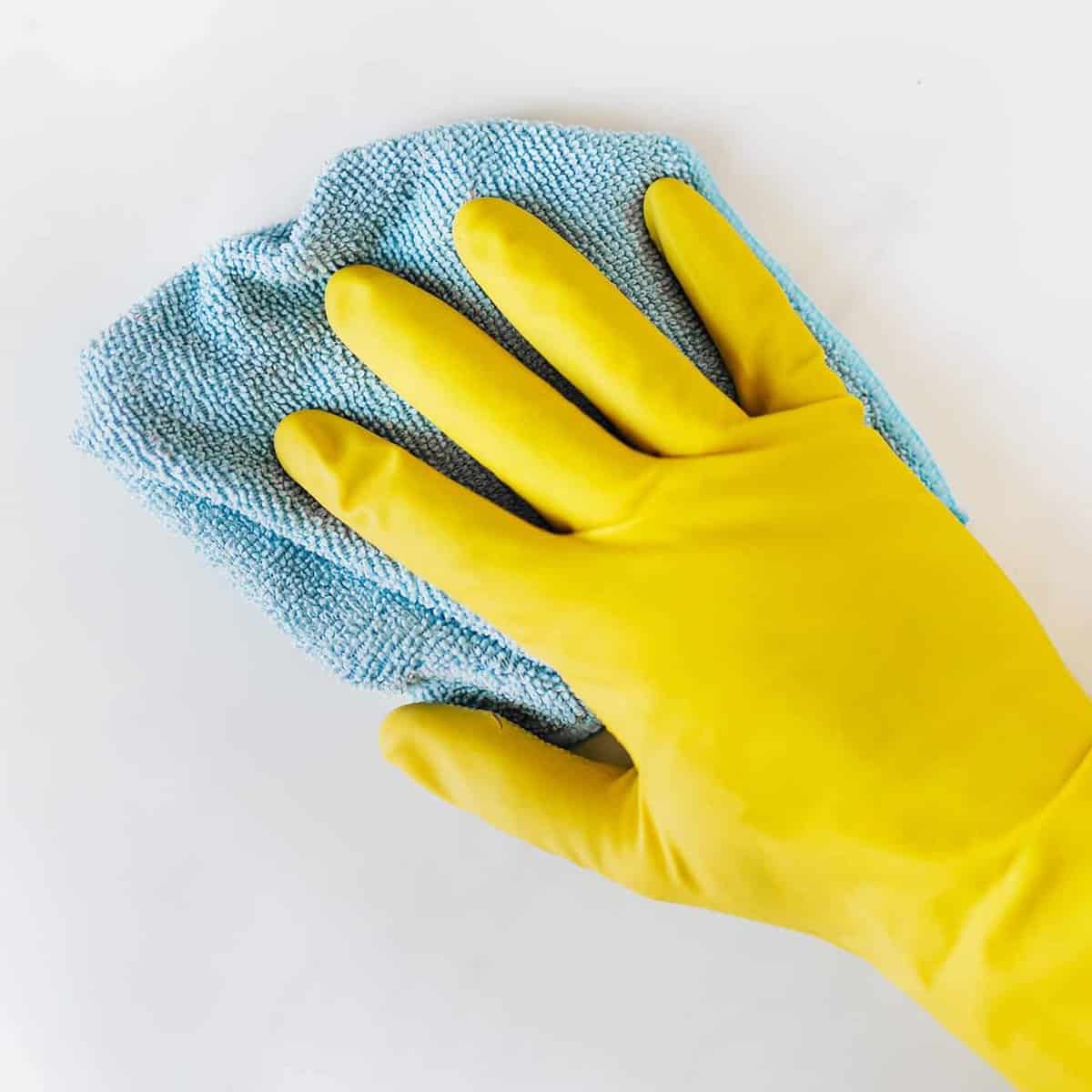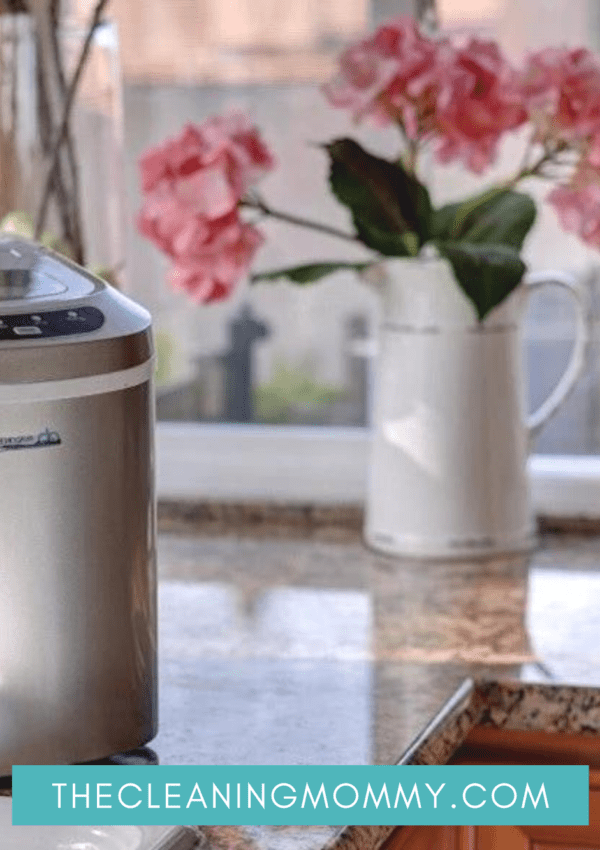From determining if your mop head is machine washable to learning how to wash a spin mop head in the washing machine to proper drying and storage techniques, this guide will cover everything you need to know to keep your spin mop in top shape, ready to tackle dirty floors with ease.
I love my spin mop. It makes cleaning my vinyl plank floors really easy. Keeping my mop head clean and sanitary is critical to having the germ free floors I want. According to Real Simple, “A dirty mop head is not as absorbent as a clean one and redistributes soil to the floor.” One of the most convenient ways to clean a spin mop head is to wash it in a washing machine. But how do you know if your mop head is suitable for machine washing, and what are the best practices to ensure a thorough cleaning without causing damage?
Determining If Your Spin Mop Head is Machine Washable

The first thing you should do is check if your mop head is suitable for machine washing before you toss it into the machine. Most spin mops have a microfiber mop head heads. Some are cotton mop heads. Whether you have a microfibre mop or cotton, they should come with a label or manufacturer’s instructions that provide information on whether they can be washed in a machine. Most spin mop heads are machine washable, but it’s always best to check the label to be sure.
Preparing Your Spin Mop Head for Washing
After confirming your spin mop head is machine washable, proceed to prepare it for washing. Here are the steps to follow:
- Detach the dirty spin mop head from its handle, following the specific instructions provided by the manufacturer.
- Remove cleaning solution, debris and hair from the wash spin mop head by pre-soaking it in clean water with mild detergent, Oxy Clean, or Borax.
- Manually remove excess dirt and debris before machine washing by hand-picking or shaking it off.

Step-by-Step Guide: How to Wash a Spin Mop Head in the Washing Machine
With your mop head prepared, proceed to wash it in the machine using the following guidelines. Follow this cleaning process for your detachable mop head to ensure that you properly wash the mop.
- Use the gentle cycle. Most washing machines have a gentle or delicate cycle specifically designed to provide a shorter and more delicate wash cycle, utilizing low or no spin and warm or cold water. This cycle is intended to protect fragile fabrics like microfiber mop heads from damage.
- Set a cold or warm water temperature. Washing in warm water (30-40°C) is recommended for microfiber mop heads, as it ensures the longevity of the fibers and provides optimal cleaning performance.
- Choosing a suitable laundry detergent is key to effective cleaning of your dirty mop head without inflicting damage. A mild detergent or liquid dish soap is recommended for washing a spin mop head, as it can remove dirt and grime without leaving a residue or weakening the fibers.
- Do not use bleach or fabric softener in this load.

Alternative Cleaning Methods for Non-Machine Washable Mop Heads
If your spin mops head is not suitable for machine washing, there are alternative cleaning methods available. Hand washing is a viable option for non-machine washable mop heads, including microfiber ones.
Another alternative method is soaking the mop head in a bleach solution. Oxygen bleach (OxyClean) is recommended for whitening a spin mop head, while chlorine bleach should be avoided for sponge or microfiber mop heads, as it may cause certain types of sponge material to degrade. When cleaning sponge mop heads, use a sink or mop bucket for best results.
FREE Secret Cleaning Hacks
Top 10 Secret Cleaning Hacks
Tired of spending hours scrubbing your house? Spending a fortune on cleaning products that DON’T work? Learn to save time AND money using our Top 10 Secret Cleaning Hacks!



Drying and Storing Your Spin Mop Head
Proper drying and storage of your spin mop head is key to preventing bacterial growth and extending its lifespan. After washing your mop head, allow it to air dry by hanging it up or laying it flat to dry. Storing your mop head in a well-ventilated area will inhibit bacteria and mildew growth, ensuring it remains clean and ready for use.
Air Drying vs. Machine Drying
Check the instructions for your mop head to see what is recommended. Machine washing is always preferred because it is faster and the heat will kill bacteria that may be left on the mop. If machine drying is not recommended, hang the mop head in a well ventilated area to dry.

Proper Storage Techniques
Proper storage of your spin mop head helps maintain its cleanliness and sanitation. To ensure the longevity of the spin mop head, follow these steps:
- Store it in a cool, dry place to prevent moisture buildup and mold growth.
- Hang the mop to allow the mop head to dry completely and avoid contact with the floor or other surfaces.
- Remember to replace the mop head when it becomes worn out or damaged.
Tips for Extending the Life of Your Spin Mop Head
Regular cleaning, proper drying, and appropriate storage are key practices to extend the life of your spin mop head. Sanitize the mop head after each use to maintain its appearance, enhance its odor, and optimize its ability to clean your floors.
Avoid practices that may reduce the lifespan of your spin mop head, such as:
- Not changing it regularly
- Allowing mildew to accumulate
- Using excessive water or soap
- Improper storage

Summary
In conclusion, maintaining a clean spin mop head is essential for keeping your floors spotless and germ-free. By determining if your spin mop head is suitable for machine washing, preparing it for washing, and following a step-by-step guide to washing it in the machine, you can ensure a thorough cleaning without causing damage.
Proper drying and storage techniques, as well as alternative cleaning methods for non-machine washable mop heads, will help extend the life of your spin mop head. With these tips and guidelines, your spin mop will be ready to tackle dirty floors with ease, leaving them sparkling clean.

Grainne Foley
Grainne Foley is a wife and mother of 2 great kids. During her 5 years of full time RV travel, Grainne learned to become very efficient at household chores, in order to make time for family adventures. Now, back in a house, she has continued to create tools and techniques to help others lighten the load of household organization and cleaning.




Leave a Reply